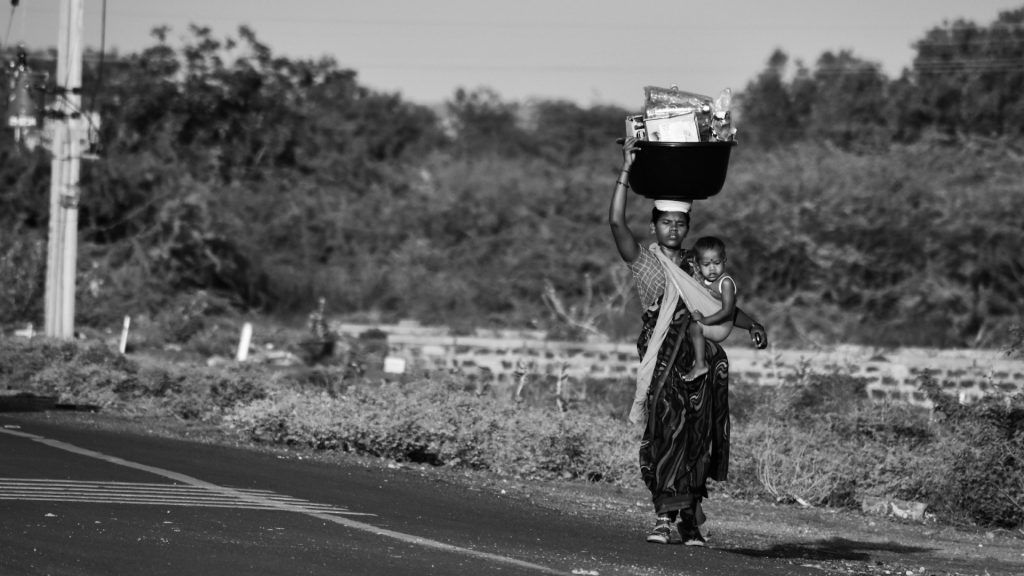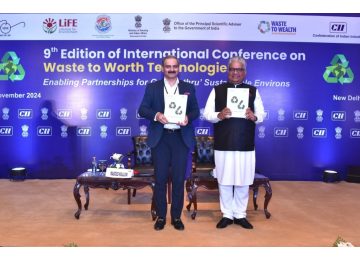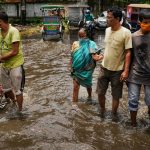India is currently facing a severe hydrological paradox: record-breaking monsoon rainfall in some regions coexisting with the worst groundwater depletion crisis in decades. This deepening crisis is fueled by a dangerous combination of erratic monsoon patterns—marked by intense, short-duration rainfall—and decades of systemic, unsustainable water extraction across the country.
As of 2025, India extracted a massive 245.64 billion cubic meters (bcm) annually from its vital groundwater reserves.
The chaotic nature of the new monsoon cycle means intense runoff over concrete and compacted soil, preventing the slow percolation necessary to refill deep aquifers, despite high overall precipitation figures.
This hydrological stress is compounded by the severe socio-economic impact on marginal farmers, who must drill deeper wells at higher costs, further locking the agricultural sector into an unsustainable dependency cycle.
Ground reality:

Monsoon is considered as the best recharger of water tables. According to the India Meteorological Department (IMD), the southwest monsoon concluded with 8% above-normal rainfall (937.2 mm). However, 20% of India’s 727 districts faced a rainfall deficit, exposing deep regional disparities.
The United Nations Institute for Environment and Human Security projected that by 2025, groundwater availability in northwestern India will reach critically low levels. For example, Punjab’s wells are 78% overexploited, impacting its role as a major rice and wheat producer, sustaining 1.4 billion people. Haryana faces an annual water deficit of about 14 bcm due to similar overuse.
States under severe hydrological stress
Bihar, Assam, and Northeast Hills: These states remained rain-deficient in 2025, aggravating drought-like conditions in large tracts of the Brahmaputra and Ganga basins. Deficient rainfall up to 41% below normal in Arunachal Pradesh and 28–32% in Assam-Meghalaya was recorded.
Maharashtra and Gujarat: Despite surplus precipitation, groundwater recharge remains weak due to intense, short-duration rainfall and minimal infiltration. Maharashtra’s Konkan and Nashik divisions saw recurrent urban flooding in July–August, whereas Marathwada witnessed groundwater decline owing to non-percolative soils.
Delhi NCR, Haryana, and Punjab: These states endured alternating spells of drought and cloudbursts, with IMD classifying June 2025 as among the hottest in 30 years. Despite temporary floods in Delhi and Gurugram in July, groundwater dependency for agriculture in Haryana and Punjab continues unsustainably high, with extraction surpassing annual recharge in several blocks.
Himalayan Belt — Himachal, Uttarakhand, Jammu & Kashmir: Repeated cloudbursts and slope failures devastated key infrastructure, with Himachal facing flash floods in Mandi and Kullu, while Uttarakhand witnessed village washouts and landslides along the Alaknanda basin.
Groundwater …
Groundwater fuels 62% of irrigation needs and 85% of rural drinking water supply, yet demand is outpacing natural replenishment.
Between 2014 and 2024, long-term monitoring shows only 28.1% of Punjab’s wells and 46.7% of Haryana’s wells have rising groundwater levels post-monsoon; the rest continue to decline. Rajasthan has similarly seen groundwater declines, although approximately 61.9% of wells showed some recovery, reflecting high spatial variability.
This overextraction, coupled with monsoon irregularities—such as rain concentrated in heavy but brief events leading to runoff rather than infiltration—has escalated water scarcity risks. Major urban centers rely increasingly on groundwater, leading to further stress, and agricultural productivity is threatened as water tables fall below accessible depths in many blocks.
Efforts like the Atal Bhujal Yojana and the Central Ground Water Authority’s regulation programs have been initiated to curb extraction and promote recharge. However, the pace of groundwater depletion and population growth mandates urgent, scaled-up intervention adopting integrated water management, stringent regulations on groundwater use, expanded artificial recharge projects, and shifts in cropping patterns toward less water-intensive varieties.
A deepening water deficit crisis is intensified by both systemic overwithdrawal of groundwater and erratic monsoon. If unaddressed, this threatens food security, livelihoods, and sustainable urban water supply across the country’s most vital agricultural and populous regions. Immediate, targeted policy action combined with community engagement and technological innovation is essential to reverse this trajectory.
Our take:
India is committing hydrological suicide. The current groundwater crisis is a choice, not a fate. We hide behind the monsoon’s veil while mismanaged overdrawing drains the nation’s lifeblood. The time for polite concern is over. Either we master groundwater management with unprecedented discipline, or we surrender to a future of scarcity and conflict.











